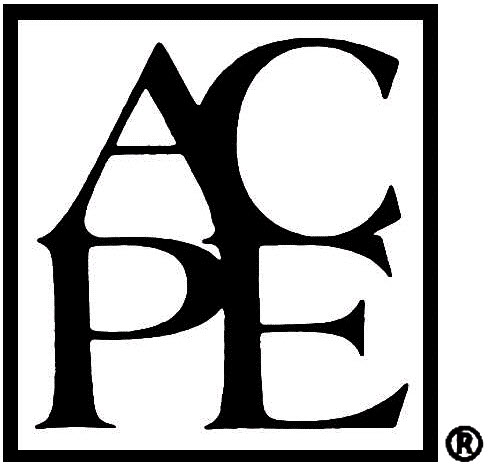Over-the-Counter Products and Drug-Drug Interactions
Patient Safety CE for Pharmacists
Are you a Pharmacy Tech? Check out the Pharmacy Tech version of this course.
Course Summary
Using over-the-counter (OTC) products alongside prescription medications is becoming increasingly common in healthcare While OTC products can effectively relieve many ailments, the risks associated with mixing these products with prescription medications cannot be ignored. The potential for drug interactions between these products can seriously threaten patient safety and result in adverse drug events. Therefore, healthcare professionals need to have a comprehensive understanding of the risks associated with combining OTC products and prescription medications and effective strategies for mitigating these risks. This course aims to provide healthcare professionals with the knowledge and tools necessary to evaluate the potential risks associated with mixing OTC products with prescription medications, identify some of the common types of drug interactions that can occur, and develop effective communication strategies for counseling patients on the safe use of OTC products in combination with prescription medications.
List potential risks associated with mixing common over-the-counter (OTC) products with prescription medications
Identify common types of drug interactions that can occur
Describe effective communication strategies for counseling patients on the safe use of OTC products in combination with prescription medications
Course Syllabus
I. Introduction
II. Overview of Common Types of OTC Products
III. Mechanisms of OTC and Prescription Medication Interactions
IV. Drug Metabolism and Pharmacokinetics
V. Drug-drug Interactions and Pharmacodynamics
VI. Factors that Affect Drug Interaction Severity
VII. Identifying and Preventing OTC and Prescription Medication Interactions
VIII. Case Studies
IX. Communication Strategies for Counseling Patients on Safe Medication Use
X. Applying Evidence-Based Guidelines to Clinical Practice
XI. Next Steps
XII. Summary
- Read the course objectives and faculty planner disclosure
- Read the course material
- Complete the post-test with a minimum score of 70% and complete the course evaluation form.
- Results are automatically submitted to CPE Monitor
Faculty Planner Disclosure
The following individuals were involved in developing this activity: Steven Malen, PharmD, MBA, and Pamela Sardo, PharmD, BS. Pamela Sardo, Pharm.D., B.S., was an employee of Rhythm Pharmaceuticals until March 2022 and has no conflicts of interest or relationships regarding the subject matter discussed. There are no financial relationships relevant to this activity to report or disclose by any of the individuals involved in the development of this activity.
Unlabeled Use Disclosures
The information provided in this course is general in nature and it is solely designed to provide participants with continuing education credit(s). This course and materials are not meant to substitute for the independent, professional judgment of any participant regarding that participant’s professional practice, including but not limited to patient assessment, diagnosis, treatment and/or health management. Medical and pharmacy practices, rules, and laws vary from state to state, and this course does not cover the laws of each state; therefore, participants must consult the laws of their state as they relate to their professional practice. Healthcare professionals, including pharmacists and pharmacy technicians, must consult with their employer, healthcare facility, hospital, or other organization, for guidelines, protocols, and procedures they are to follow. The information provided in this course does not replace those guidelines, protocols, and procedures but is for academic purposes only, and this course’s limited purpose is for the completion of continuing education credits. Participants are advised and acknowledge that information related to medications, their administration, dosing, contraindications, adverse reactions, interactions, warnings, precautions, or accepted uses are constantly changing, and any person taking this course understands that such person must make an independent review of medication information prior to any patient assessment, diagnosis, treatment and/or health management. Any discussion of off-label use of any medication, device, or procedure is informational only and such uses are not endorsed hereby. Nothing contained in this course represents the opinions, views, judgments, or conclusions of RxCe.com LLC. RxCe.com LLC is not liable or responsible to any person for any inaccuracy, error, or omission with respect to this course, or course material.
Computer Hardware/Software Requirements
Please ensure the device you plan to use meets these requirements and specifications:
- Operating System: Windows 7,8,10, or 11 /Mac OS X 10.9 or later/iOS/Android
- Supported Browsers: Microsoft Edge, Firefox, Google Chrome, Safari, Opera
- A connection to the internet
- For Live Webinars or Conferences: GoToWebinar application for iOS, Android, Mac, or PC. You cannot 'call into' a live conference.
Rating: 4.24/5
Based on the ratings of 684 customers
- Target Audience: Pharmacist
- Secondary Audiences: This educational activity is also for other healthcare professionals, such as nurses, physicians, or others who may be part of a healthcare team and may be interested in this educational topic. A healthcare team approach to patient care may be discussed in this activity, as applicable. No state board or professional organization has evaluated this activity to determine whether it meets the continuing education requirements of nurses, physicians, or other professions not listed under the “Target Audience” described above. Always verify with individual employers or supervisors whether they will accept this educational activity upon completion.
- Contact Hours: 1.0 (0.1 CEUs)
- Activity Release Date: 6/17/2023}
- Activity Expiration Date: 6/17/2026}
- Activity Type: Knowledge
- UAN: 0669-0000-23-086-H05-P
- Topic: Patient Safety
- CeBroker Number: 20-1079222
Faculty:

RxCe.com, LLC is accredited by the Accreditation Council for Pharmacy Education as a provider of continuing pharmacy education.